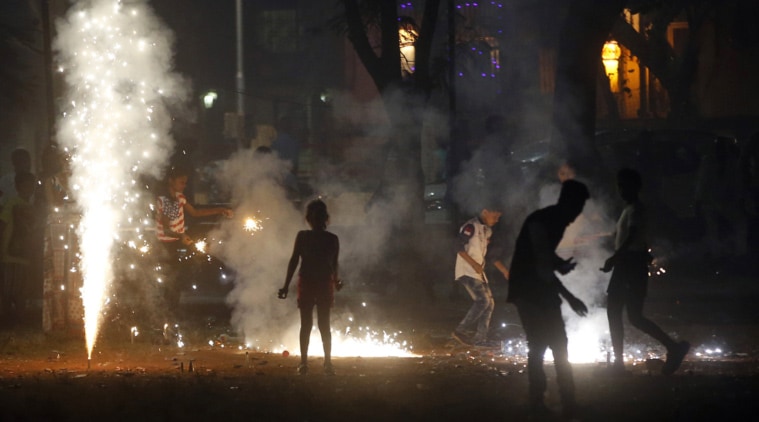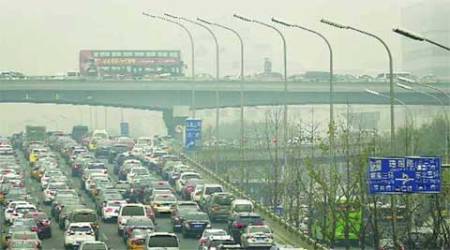Air quality dipped on Diwali, could have been worse if not for favourable weather
The CPCB said pollutants dispersed faster this year due to favourable weather conditions.
 The
Central Pollution Control Board (CPCB) Saturday confirmed particulate
matter had peaked across its air quality monitoring stations on Diwali,
hitting close to 600 micrograms per cubic metre, around six times the
prescribed limit for PM10, and 80 times for PM2.5.
The
Central Pollution Control Board (CPCB) Saturday confirmed particulate
matter had peaked across its air quality monitoring stations on Diwali,
hitting close to 600 micrograms per cubic metre, around six times the
prescribed limit for PM10, and 80 times for PM2.5.The CPCB said pollutants dispersed faster this year due to favourable weather conditions. So, the recorded PM levels have been in spite of these factors. “The data reveals there was a significant shift in wind direction on the festival day, which resulted (in) less humidity profile… besides increase in wind speed from 1.9 m/sec to 3.4 m/sec attributed to dispersion of pollutants. Normal atmospheric pressure of 988mb coupled with increased atmospheric mixing height to the level of 855 metres resulted (in) easy dispersion of air pollutants,” the CPCB noted.
The ministry of environment’s pollution control body noted that particulate matter levels, including the larger PM10, and smaller PM2.5 that penetrates respiratory tracts, went up across its monitoring stations, both in manual and online observation methods.
According to manual instrumentation followed by chemical methods, PM10 and PM2.5 levels started increasing steadily from November 5, a week before Diwali. PM10 peaked from 166 to 593 micrograms per cubic metre in East Arjun Nagar.
In Janakpuri, the levels went up from 119 to 554 micrograms per cubic metre. PM2.5 levels went up from 96 to 474 micrograms per cubic metre, and from 84 to 459 micrograms per cubic metre, respectively, in the same areas during this period.
“The concentration of particulate matter (PM2.5 and PM10) exceeded the prescribed limit irrespective of locations,” the CPCB statement noted.
The online monitoring of air quality recorded a spike in PM2.5 from around 78 to 192 micrograms per cubic metre at IHBAS and from 108 to 121 micrograms per cubic metre at Shadipur.
The CPCB, however, did not record any spikes in levels of SO2 associated with cracker burning, as observed by independent agencies such as the Centre for Science and Environment, this year.
The CPCB said levels of NO2 associated with vehicular pollution also remained within safe limits.

